Our
History
The Lutherans did something amazing over 50 years ago when they purchased a little slice of heaven in the middle of NH.
The History of Calumet
by Rev. Rick Dacey, Staff Alumni
Author's Preface (written in 1990)
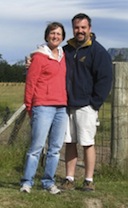 In June of 1977, I first stepped foot in Boys' Cabin 5 at Camp Calumet Lutheran. I was the last to arrive and was warmly greeted by my counselors John and Scott, as well as all of my cabin mates. Up to that point, I was very nervous about leaving my parents but that warm welcoming feeling of Calumet never left. I returned to Calumet for seven more years as a camper and have since worked on the summer staff for several years as a counselor and unit leader.
In June of 1977, I first stepped foot in Boys' Cabin 5 at Camp Calumet Lutheran. I was the last to arrive and was warmly greeted by my counselors John and Scott, as well as all of my cabin mates. Up to that point, I was very nervous about leaving my parents but that warm welcoming feeling of Calumet never left. I returned to Calumet for seven more years as a camper and have since worked on the summer staff for several years as a counselor and unit leader.
Last summer, as I sat reflecting under a lunar eclipse, I realized not only how much the Calumet experience had affected my life, but also how much it must have affected the many thousands of others who have played ball on the field where I lay. I thought of others like me, to whom this place had become a special sort of home where life-long friendships could be forged and where one could draw closer to God through fellowship and the splendor of God’s Creation.
Calumet, I knew, had a rich heritage. Through the years I had heard many stories and legends of its past, but many details as to their verity or the origins of some of the camp's hallowed songs, cheers, and traditions are sketchy. This is due to the fact that in the total combined years of camping at Camp Ossipee (the original name of the site) and Camp Calumet, which incidentally equal 100 years in 1990, there has never been a significant written history or record. I, therefore, decided to put what I had learned as a history major at Gordon College to work, and write one. It is by no means complete. As an amateur historian quickly learns, the most difficult part of writing history is deciding what must be left out. What I have tried to do is record the most important names and events in the camp's history as well as capture something of the atmosphere and character of Calumet.
I wish to acknowledge the assistance and encouragement of Dr. Thomas A. Askew, a professor and chairperson of the department of history at Gordon College in Wenham, MA. He helped me to sift through and make sense of the primary sources with which I worked and offered ideas of where to look for clues in the piecing together of this puzzle.
I would also like to thank the many people who patiently jogged their memories and made available various documents from which I have gained much information. I would like to especially thank John R. Webster and Donald G. Johnson for their time and efforts in this regard. Special mention must be made of the amiable Nelson "Scrow" Works of the Freedom Historical Society without whom I could not have accurately identified dates pertaining to Camp Ossipee.
In conclusion, this is dedicated to all who have been members of the Calumet family through the years.
In early July of 1902, John Calvin Bucher, an instructor at Peekskill MilitaryAcademy in Peekskill, New York, took a number of his students to a site located on some land he had recently purchased in New Hampshire for a three-week outdoor camping experience. That site was the north shore of Lake Ossipee and that three- week excursion marked the beginning of a camping experience that is still living and growing today.
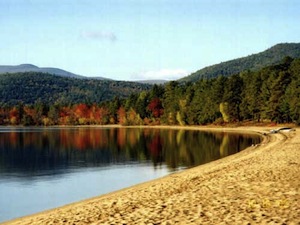 The site is now known as Calumet Lutheran Camp & Conference Center. This history is an attempt to trace and record the most important people and events, traditions and changes which have made Calumet what it is today.
The site is now known as Calumet Lutheran Camp & Conference Center. This history is an attempt to trace and record the most important people and events, traditions and changes which have made Calumet what it is today.
Long before the European ever stepped foot on this land and claimed it, the Ossipee Indians lived from its bounty and recognized its true owner. They hunted game and caught fish, which comprised a major part of their diet, as well as providing them with shelter and clothing, without which they could not survive.
The land and the lake provided for all their needs. However, despite their dependence upon the abundant resources of the area, they made no territorial claims. That which sustained the tribe was not its own, it was shared with them by the Great Spirit. The Ossipees called the lake "The Smile of the Great Spirit".
The Ossipee Indians were Pequawkets (pronounced Pig'-whack-it); one of the four primary groups which comprised the larger Eastern Abenaki group. They spent the majority of their time in their permanent villages along the Saco River, and one is hard pressed to find any evidence of any settlements on the site of what is now Calumet.
There is, however, a substantial body of archaeological evidence which indicates that the Ossipees made frequent visits here in search of game. Hunting parties would make their way in dugout canoes via the Ossipee River that connects the Saco River with the lake.
When the Europeans began to settle the area in the eighteenth century, they set up artificial boundaries, and called the land their own. They did this by the lofty authority granted them in writing on numerous charters issued by the King of England, who incidentally also presumed to be King of Ireland and France, by the Grace of God. The people of Ireland and the King of France may have taken exception with him on this sovereignty matter. Nevertheless, to the mind of a colonist, any person with the power of King George certainly had the authority to reign over a wilderness inhabited by no one, save a few scattered “bands of barbarians”.
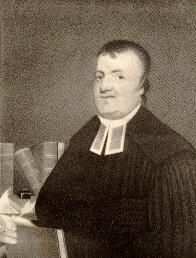 There were a few skirmishes between the Europeans and the Indians, but on the whole the natives were overwhelmed and simply swept off into Canada. The great plague of 1617 did most of the European’s killing for them as the eastern Indians, including the Ossipees, never recovered from its devastation. In 1784, Jeremy Belknap referred to this plague in a manner that typifies the European attitude toward the land's original inhabitants: "By such singular means, did divine providence prepare the way for the peaceable entrance of the European into this land".
There were a few skirmishes between the Europeans and the Indians, but on the whole the natives were overwhelmed and simply swept off into Canada. The great plague of 1617 did most of the European’s killing for them as the eastern Indians, including the Ossipees, never recovered from its devastation. In 1784, Jeremy Belknap referred to this plague in a manner that typifies the European attitude toward the land's original inhabitants: "By such singular means, did divine providence prepare the way for the peaceable entrance of the European into this land".
The first white person to make regular use of the site was Grover Cleveland, the twenty-second President of the United States. Like the Ossipees, Cleveland did not make a home there but used it as a base for hunting and fishing. The Indians' subsistence was the President's sport and the comfortable lodge he had built there was the first permanent structure erected on the site.
And so our narrative at last comes around to the roots of Camp Calumet itself. The camp actually has two histories: the history of camping on the present site and the history of the camp named Calumet which until 1938 was located near the New Hampshire-Vermont border in Canaan, N.H. For the sake of clarity, we shall begin by tracing the former up to 1938, when Calumet moved to its present location. We shall then backtrack to Calumet's Canaan roots and carry that history on through to the present.
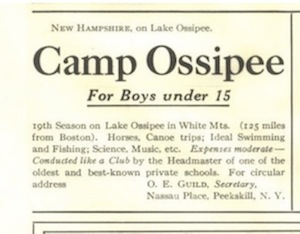 It was on this site at Lake Ossipee that John Bucher founded Camp Ossipee for Boys. Camp Ossipee was one of the earliest summer camps to be founded in the U.S. The first organized camp was, like Ossipee, founded by a military school instructor. This camp, located in Connecticut on Long Island Sound was directed by Frederick William Gunn and during the 1860's centered on military activities common to the Civil War period.
It was on this site at Lake Ossipee that John Bucher founded Camp Ossipee for Boys. Camp Ossipee was one of the earliest summer camps to be founded in the U.S. The first organized camp was, like Ossipee, founded by a military school instructor. This camp, located in Connecticut on Long Island Sound was directed by Frederick William Gunn and during the 1860's centered on military activities common to the Civil War period.
The first privately-owned camp was established in 1876 by a physician named Rothrock. The philosophy of this camp was to provide the 20 boys with experiences in healthful living. In my research I have been able to find nothing to counter the long held traditional notion that Ossipee was the second private boys' camp to be founded after Rothrock's in Wilkes-Barre, PA.
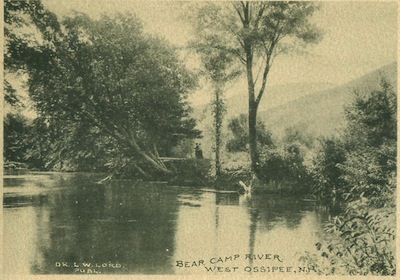 Here I must admit the limits of the sources that I have had at my disposal. There is scarce photographic record and decidedly limited written record that has survived concerning Camp Ossipee, which ran from 1902-1938.
Here I must admit the limits of the sources that I have had at my disposal. There is scarce photographic record and decidedly limited written record that has survived concerning Camp Ossipee, which ran from 1902-1938.
What has survived are some official papers (permits and the like), a couple of 30- page promotional brochures, four large buildings and a small one, and a good number of traditions. Also surviving is Mr. John R. Webster who was on the staff from 1930-1938 and served as director of hiking and trips, dramatics director, and program director in the camp's final years. By combining the available sources, I believe I have been able to arrive at an accurate, though in places sketchy, picture of what Camp Ossipee was like.
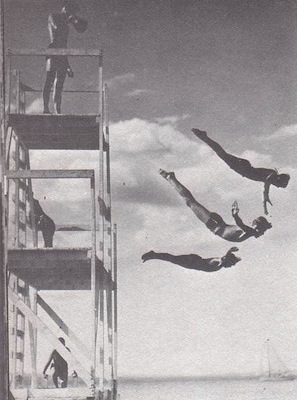 Camp Ossipee was a well-equipped camp for the sons of people with means. The tuition for the eight-week session in 1934 was $300. (Not including the $40 riding fee and the $25 "incidental" fee). In addition, there were the two-way transportation costs, as the majority of the boys came from New York and New Jersey. As one long- time summer neighbor of the camp quipped: "It was just a place where rich people dumped their spoiled brats so they could go off to Europe for the summer". Surely he was biased by peaceful New Hampshire mornings being shattered by bugle call and mobs of boys taking to the lake for their "first dip". Still, it is true that only the very wealthy could send their sons to Ossipee, considering the hard times and the value of the dollar.
Camp Ossipee was a well-equipped camp for the sons of people with means. The tuition for the eight-week session in 1934 was $300. (Not including the $40 riding fee and the $25 "incidental" fee). In addition, there were the two-way transportation costs, as the majority of the boys came from New York and New Jersey. As one long- time summer neighbor of the camp quipped: "It was just a place where rich people dumped their spoiled brats so they could go off to Europe for the summer". Surely he was biased by peaceful New Hampshire mornings being shattered by bugle call and mobs of boys taking to the lake for their "first dip". Still, it is true that only the very wealthy could send their sons to Ossipee, considering the hard times and the value of the dollar.
Mr. Bucher was a stately gentleman with silver-white hair, a thick white mustache, and a well-groomed goatee. With the exception of the initial few years, Bucher did not play a very active role in the life of the camp.
It was he who did the hiring and firing of counselors and other staff. He also oversaw all the administrative details - vital to any camp, but central to one operated for profit. Bucher was a shrewd businessman and a fine hands-off manager; however, he definitely lacked the enthusiastic involvement with campers and staff which characterized later Calumet directors like "Chub" Callard, "Doc" Ellsworth, and "D-Guy" Johnson. We shall meet these men later in our narrative.
To compensate for his lack of direct involvement in (and even frequent absence from) the camp, Bucher hired a very competent staff, most of whom where graduates of, and the rest of whom were students at, some of the nation's finest colleges and universities (Princeton, Amherst, Cornell, Johns Hopkins, etc.).
The quality of the staff was boasted in the camp's brochures to describe the company your son would keep if he were to enroll: "Among the patrons being represented may be noted: The President of the Baltimore and Ohio R.R., The President of Ohio State Bar Assoc., ...The President of Life Publishing Co., Comptroller of the Chase National Bank,...Dean of the University of Maine, [etc.]" The purpose of the camp was to build boys physically and morally. One brochure states as requirements for membership (besides large sums of cash): "Membership is open to boys from 8 - 17 years of age...Boys who have had good training in Christian homes will find the atmosphere and tone of the Camp congenial and helpful, and for such boys the Camp renders a distinct service..." Camp life at Ossipee centered on the various camp activities, the fare of which has changed little over the years. The incentive for enthusiastic participation in these activities (besides just plain fun) was the attainment of the "O" — akin to a varsity letter. Credits toward the "O" were based on degree of participation and effort in the following: nature study, baseball, tennis, track, swimming, diving, paddling [canoeing], rowing, lifesaving, fishing, camp craft, sailing, photography, archery, marksmanship, glee club, orchestra, bugler, dramatics, camp paper, and sailing.
More important to earning the "O" though were conduct, table manners, politeness, and "banner tent". A greater number of credits were required in these categories than the others and the maximum credit earnable from these was much greater than the aforementioned activities. For example, a boy could earn 40 points in a summer by maintaining a conduct record "free of adverse reports", whereas the best sailor in camp could only earn 10 points for his efforts. In this way, the balance between moral development, which requires more external incentive and physical development was achieved.
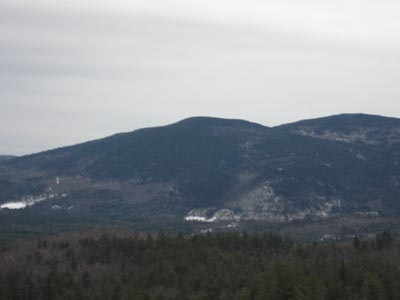 Ossipee's campers enjoyed frequent, and sometimes lengthy (in the case of the older boys), trips away from Camp. The juniors and intermediates enjoyed hikes up Mt. Whittier and Chocorua while the seniors challenged Mt. Washington and the Presidentials. The campers also enjoyed canoe trips which ranged from day trips to five and ten day trips to Sebago Lake and even as far as the Atlantic. Canoeing was especially placid in the days of Camp Ossipee. A tent could enjoy a wienie-roast on Spindle Point in Broad Bay without the constant interruption of speedboats and jet- skis; only the occasional loon making its familiar call. On the whole, the land surrounding Lake Ossipee and its tributaries was entirely undeveloped wilderness. Indeed, each morning, in lieu of showers, the entire camp took their morning 'dip' -- in their birthday suits!
Ossipee's campers enjoyed frequent, and sometimes lengthy (in the case of the older boys), trips away from Camp. The juniors and intermediates enjoyed hikes up Mt. Whittier and Chocorua while the seniors challenged Mt. Washington and the Presidentials. The campers also enjoyed canoe trips which ranged from day trips to five and ten day trips to Sebago Lake and even as far as the Atlantic. Canoeing was especially placid in the days of Camp Ossipee. A tent could enjoy a wienie-roast on Spindle Point in Broad Bay without the constant interruption of speedboats and jet- skis; only the occasional loon making its familiar call. On the whole, the land surrounding Lake Ossipee and its tributaries was entirely undeveloped wilderness. Indeed, each morning, in lieu of showers, the entire camp took their morning 'dip' -- in their birthday suits!
Many of Ossipee's traditions died with the name, the "O" for instance, and the Camp Senate that consisted of camper reps. from each tent which aided in the "determination of policies affecting the life of the camp". Also retired was the camp song/cheer which was sung to end an assembly or at any time as a group expression of camp spirit: Hi-hi hikus, Always winning, Nobody like us, Always grinning, We are the Gang from Ossipee! Always bright and free . . . HIKE!
The physical layout of the camp did not die such an abrupt death. What is now Staff House was the infirmary. What is now the infirmary was the riding stables. What is now the dining hall was built in 1925 on the site of the President's old fishing lodge. As a result, it was named Cleveland Hall. In 1932, on the 30th anniversary of the founding of the camp, the Camp House was built (now Luther Hall). Finally there was the workshop (now the plastics shop) where boys worked with wood and leather.
In 1938 Bucher had grown tired of camping after 36 years. He had intended to pass on the administration of the camp to John Webster in a few seasons but, ever the businessman, jumped at the chance to sell it when Robert C. Callard of Camp Calumet made an offer.
It was the end of an era. Gone forever was the "O" and the dances with Mrs. Bucher's Pine Knoll Camp for girls. Gone were the nights when the camp would be lulled to sleep by Charlie Hackett out in a canoe with his saxophone after taps. The camp would be filled with new faces now -- those of Calumeteers.
Camp Calumet was founded in 1925 by Robert C. Callard, better known as "Chubby", though his nick-name did not accurately describe him. 1925 was one of the peak years in the "camp explosion" when camps sprouted up all over the nation between 1910 and 1930. Chubby chose as a site, a hill overlooking Crystal Lake in Canaan, N.H.
It is from this camp that many of the traditions, place names, and stories now in Calumet lore have their earliest root. What would Calumet be without "Down Beside the Moonlit Waters"? This was actually an adaptation of "High Above Lake Crystals Waters" from the days when Calumeteers would end the season by saying, "See you next year on the hill!"
The camp cheer, which originated in 1925 in Canaan, is almost identical to today's cheer.
1925: Boom-Chicka-Boom Boom-Chicka-Boom Boom-Chicka-Ricka-Recka Boom-Boom-Boom Wah-hoo-Wah, Wah-hoo-Wah Calumet, Calumet Rah, Rah, Rah, Rah Ray, Ray, Ray, Ray C-A-L-U-M-E-T Team! Team! Team!
1999: Boom-Chicka-Boom Boom-Chicka-Boom Boom-Chicka-Rah,Rah Boom-Boom-Boom Wah-hoo-Wah, Wah-hoo-Wah Calumet, Calumet Rah, Rah, Rah, Rah Ray, Ray, Ray, Ray C-A-L-U-M-E-T Calumet, Calumet, YEA!
Calumet in Canaan was for boys from 7 to 15 and in many ways was quite similar to Camp Ossipee. Like Ossipee, Calumet was a private boys camp for the well-to-do. The goal was the same: to build a boy physically and morally.
Callard articulated this purpose in these words: "Calumet's purpose is to provide a carefully planned, healthy, happy summer for each boy; to develop habits of control, self-confidence, thoughtfulness, good fellowship, and loyalty, together with skills in sports; to meet the needs of boys along lines in which they should be developed, and as far as possible, supplement the school and city life; to build the foundation of an upright and useful citizen of the future. Systematic regularity of activities and sleep, plenty of wholesome food, and wisely directed physical exercises are the outstanding features of Camp Calumet."
This philosophy is similar to that behind Scouting, which was taking off at the time. Therefore, it is no surprise that during the Calumet Canaan years, Boy Scouts were afforded the opportunity to continue their work in the various grades of Scouting under a counselor who was an Eagle Scout.
Organized camping, along with Scouting and organizations like the YMCA, grew as a reaction to an America that was becoming increasingly industrial. It was felt that boys should get out into the fresh air and away from the cities so that the development of their bodies, as well as their character, would not be stifled. Through the use of sports, crafts, and general team work, these institutions sought to build boys into men, and it was in this spirit that Camp Calumet for Boys was founded and grew.
Calumet put greater emphasis on crafts than did Ossipee. There was a leather shop, a metal shop, a model airplane shop and the most popular of them all -- the boat shop. In the boat shop, the boys made model sailboats and the experienced wood workers built kayaks. It is these kayaks that live today in the famous "Legend of the Green Jello Monster", a common campfire tale.
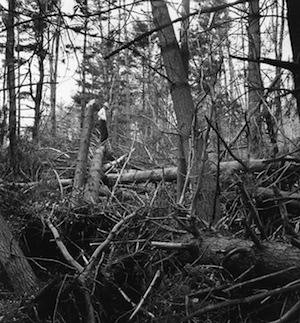 In 1938, disaster struck. The hurricane of '38 ravaged New England and did enormous damage to the old Canaan site. So extensive was this damage, that it was decided that the best thing to do would be to simply seek a new location. Callard met with Bucher and within a month of the great storm, arrangements were finalized. In the summer of 1939, Calumet's 13-year tradition continued in its new location in Freedom, NH.
In 1938, disaster struck. The hurricane of '38 ravaged New England and did enormous damage to the old Canaan site. So extensive was this damage, that it was decided that the best thing to do would be to simply seek a new location. Callard met with Bucher and within a month of the great storm, arrangements were finalized. In the summer of 1939, Calumet's 13-year tradition continued in its new location in Freedom, NH.
In reality, the north shore of Lake Ossipee was a site much better suited to the needs of a summer camp than the sloping hillside in Canaan. For example, Crystal Lake was far too small and calm for sailing, whereas most afternoons afford excellent conditions for sailing on Ossipee. Also, the site in Freedom on Lake Ossipee is flat. The excellent drainage on Canaan's steep slope proved to be not so good after all. It ended up washing out the entirety of the camp's buildings, fields, etc.
With the new site and its new facilities, Camp Calumet would expand and grow. The fields and waterfront on Lake Ossipee were far superior to the Canaan site and the Playhouse (as Calumeteers called the old 'Camphouse' and future 'Luther Hall') provided a meeting space unlike anything that could be erected on the hill over Crystal Lake.
Much preparation and building was needed though to accommodate the campers in the manner in which they had grown accustomed. For these tasks, Chub would need help. Chubby was considering retirement after over a decade of being a camp director and the destruction of Calumet's original site compounded his sentiment. However, he felt a sense of commitment to the boys with whom he had grown so close over the years. And so, in order to meet the task of leading Calumet on into the future, he asked Ferrin "Doc" Ellsworth (who had been associated with Calumet since its second year) to become a co-director with him. Doc accepted, and together they worked to make Calumet in Freedom even better than Calumet in Canaan.
Though the Ossipee boys weren't used to having a grand hall like the Playhouse, they were accustomed to sleeping in cabins -- not tents. The cabins which now make up the girls' junior end were originally built to house Calumet's upper-junior boys, replacing Camp Ossipee's tent rows. The junior's cabins were built between the Playhouse (Luther Hall) and the Infirmary (Staff House). Years later, two long barrack-like cabins, now known as boys’ junior end, replaced the senior camp tent row.
The boys were also accustomed to hot and cold showers, so these too needed to be added to the existing toilet facilities. Actually, the showers were more of a necessity than a mere convenience. By the late thirties and into the forties, Calumet's summer neighbors were growing in number. The presence of these neighbors, most notably Camp Winnemont for girls (now Wabanaki Campground), made daily skinny-dips (as was the Camp Ossipee tradition) impractical.
In addition, another craft building was erected to make room for all of Calumet's crafts and a nature house was built. A major part of the nature curriculum at Camp Calumet for Boys was the capturing, classifying and mounting of the many species of moths and butterflies to be found in the fields and forests of New Hampshire. Over the years, the collection of mounted specimens became so numerous that every wall of the nature house was eventually covered to display them. Because of this, the nature house was often referred to as the Bug House. The impressive collection of butterflies is long since gone, but the building's nickname endures.
For this extensive expansion, Chubby and Doc employed a local native named Harold Ross. Ross did this building primarily with lumber from trees on the Calumet site. Considering the fate of the Canaan site, it is not surprising that when the new buildings, as well as the old ones, survived the mid-fifties hurricanes, a plaque was placed on the senior cabins (boys' junior end) as a tribute to Ross' craftsmanship.
World War II saw a number of changes and challenges for Calumet. In 1943, Chubby Callard decided to finally retire. He knew that Doc, who had played a crucial role in the successful move to Freedom, had what it took to lead Calumet into the future, and so felt that he had done right by the boys. Still, it was a very emotional goodbye for both Chubby and the veteran campers and staff.
The War itself caused a number of problems for the camp. Food rationing made it very difficult to keep the kitchen stocked. Counselors were another problem. The brochure continued to boast that Calumet counselors were "a fine group of college men". This was true before and after the War but certainly not during it. With the exception of a few older men, the body of counselors in 1944 consisted of high school boys too young to shave.
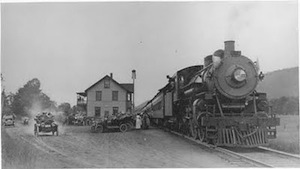 Another challenge was transportation. Gasoline rationing made it most impractical for parents to drive their boys to camp. Like Camp Ossipee, most of Calumet's campers came from New York and New Jersey. Since the Camp's earliest days, the primary mode of transport used was the train. Specially reserved cars would be loaded with anxious campers at Grand Central Station bound for New Hampshire. The train ride was always a memorable experience. Casa novas like the famous Connolia twins would try to get an early start on summer romances with girls in other chartered cars bound for nearby camps like Allegro and Huckins.
Another challenge was transportation. Gasoline rationing made it most impractical for parents to drive their boys to camp. Like Camp Ossipee, most of Calumet's campers came from New York and New Jersey. Since the Camp's earliest days, the primary mode of transport used was the train. Specially reserved cars would be loaded with anxious campers at Grand Central Station bound for New Hampshire. The train ride was always a memorable experience. Casa novas like the famous Connolia twins would try to get an early start on summer romances with girls in other chartered cars bound for nearby camps like Allegro and Huckins.
With each wartime year, the railroads became more and more packed and it was a real struggle to get all the boys to camp. Doc, who loved traveling and airplanes saw the relatively new industry of commercial air travel as a possible solution. On June 26, 1945 seven flagships of American airlines (DC-3's) transported 106 Calumet campers from New York to Boston. The trip received much publicity in the New York and Boston media and was very exciting for the campers.
Each camper was given a souvenir 'sleeper' bag inscribed "First to Camp by Air, Camp Calumet, June 1945, New York to Boston via Flagship". Thus, Doc had at once eased the congestion on the railroads, and given Calumet an added attraction.
The air trips continued for several years after the war. By 1949, however, the novelty had worn off and the bother and expense of air travel gave way to the train again. The trains were now equipped with air-conditioning, another novel treat!
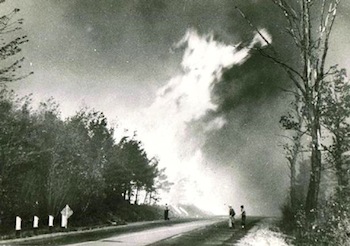 In October of 1947, Calumet was just yards away from a disaster even greater than the hurricane of ’38. A number of tremendous forest fires raged throughout Maine and into New Hampshire. The damage was immense and Maine was declared a disaster area. The New York Times noted on October 26th that columns of smoke rising from the fires were "larger than any yet produced by the detonation of the Atom Bomb."
In October of 1947, Calumet was just yards away from a disaster even greater than the hurricane of ’38. A number of tremendous forest fires raged throughout Maine and into New Hampshire. The damage was immense and Maine was declared a disaster area. The New York Times noted on October 26th that columns of smoke rising from the fires were "larger than any yet produced by the detonation of the Atom Bomb."
Harold Ross, whom we met earlier, was then employed as maintenance director and winter caretaker (he held the latter job until 1974). He had heard the radio warnings of the fire and judging by the wind direction, knew Calumet was in eminent danger. He hurried to form a fire trench, which he was still finishing, as the fire closed into the point of visual contact. It was the bravery and dedication of this man that saved Calumet's beautiful site from utter destruction.
In 1950, the 48th year of organized camping on the site, Camp Calumet celebrated its 25th year, and a gala celebration it was! There were banquets and anniversary publications and a giant picnic in May held for Calumeteers past and present in New Jersey. There was much waxing nostalgic, but Calumet's silver anniversary was still in the early days of Calumet. Much was in store. During the thirty years Camp Calumet was operated as a private boys' camp, a tradition developed that has endured in many ways, even today.
Like Camp Ossipee, sports, especially baseball, were seen as a good way to develop a boy physically and emotionally. Every boy played on an intramural, JV or Varsity ball club. The jayvee and varsity clubs competed against camps like DeWitt, Robin Hood, Wyanoke, and Wonalancet.
Where Camp Ossipee had the "O" as an incentive for each camper to fully involve himself, Calumet had the Blue and Gray competition. Each boy was, at the beginning of the summer, placed on either the Blue or Gray team. Points could be earned for your team by individual achievement, much the same as the "O" was earned. In addition, however, there were Blue-Gray competitions throughout the summer, which was the source of a keen intra-camp rivalry. These competitions consisted of track meets, swim meets, giant capture the flag games, as well as run and chase games which were the original forerunners to today's Wide Games.
The Blue-Gray competitions were followed closely in the camp's weekly newspaper, the Calumet Call. Each week the Call did a splendid job of recording the news and gossip around camp and, thanks to the thoughtfulness of Mrs. Ellsworth, we can still enjoy it today. Collections of the Call were sent to Calumeteers every year at Christmas to help them remember the good times they had at camp. Collections for most years of Calumet's operation were donated to the camp by Mrs. Ellsworth after Doc's death and are now preserved in the Calumet historical archives.
Also recorded in the Call is the excitement generated whenever the all-boy camp made contact with members of the opposite gender (besides the camp nurse or Mrs. E.). There were periodic (but not overly frequent) “parties” held with neighboring girls' camps like Allegro and Huckins. These parties would consist of well- chaperoned walks about campus, goodies like chips, chocolate milk, and sundaes, and would end with the girls singing their camp song and the boys responding with a "Boom-Chicka-Boom".
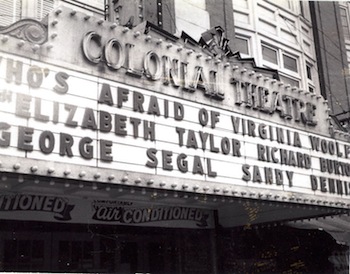 Trips were also an opportunity to see and meet girls. Calumet campers enjoyed hiking and canoe trips but the extra-long trips of the Ossipee days gave way to trips to relative civilization. Back in Canaan and then in Freedom, campers were from time to time treated by trips via automobile or bus to Dartmouth, North Conway, and other pockets of population. One popular destination was the movies, although more time and effort was spent finding a strategic seat near some blushing beauty than in enjoying the feature.
Trips were also an opportunity to see and meet girls. Calumet campers enjoyed hiking and canoe trips but the extra-long trips of the Ossipee days gave way to trips to relative civilization. Back in Canaan and then in Freedom, campers were from time to time treated by trips via automobile or bus to Dartmouth, North Conway, and other pockets of population. One popular destination was the movies, although more time and effort was spent finding a strategic seat near some blushing beauty than in enjoying the feature.
Traditions of the old Camp Calumet which have been forgotten include boxing and rifle tournaments, the annual circus, and the annual snipe hunt. Many have survived, however, and many new ones were established, as we shall see a little later.
At any rate, the 1950's were very prosperous ones for Calumet. With the new Beetle fleet, the sailing department took off with the boys working through the summer to improve their skills and earn the various award "ranks" of crew member, mid-shipman, captain, and admiral.
Crafts took off too with the addition of plastics to the metal shop. Indeed, the period between 1946 and 1956 may be characterized as the golden decade of Camp Calumet for Boys. Enrollment was at maximum capacity and Doc, aided by a faithful staff, worked hard to make each year’s program and facilities an improvement over the last year.
Towards the end of the decade of the 1950's, the Ellsworths decided it was time to retire from camping. As a result, they saved a greater portion of their profits rather than maintaining and improving the facilities while they looked for a buyer.
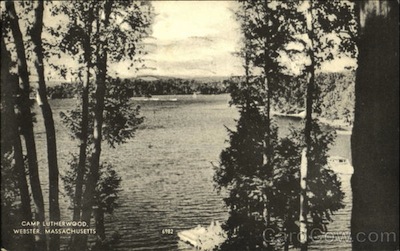 That buyer came in late 1959 and was called New England Lutheran Camp, Inc. which had operated Camp Lutherwood in Webster, MA.
That buyer came in late 1959 and was called New England Lutheran Camp, Inc. which had operated Camp Lutherwood in Webster, MA.
In the summer of 1960, New England Lutheran Camp, Inc., under the jurisdiction of the New England Conference of the Augustana Synod, began a program of outdoor ministry, which centered on a philosophy of Christian education.
The first director of Camp Calumet Lutheran was the Rev. Carl Bloomquist. Doc stayed on the first year as a labor of love to aid in the transition. He was quite overwhelmed by the rapid and dramatic changes that the Lutherans made.
Calumet had never made Ellsworth a rich man (materially at least), but a camp run for no profit at all didn't make sense to him. Putting boys and girls on the same site made even less sense to him. In fact, he thought it was mad. Socials and parties were one thing, but sleeping over night --- every night?! Despite the fact that Doc thought the Lutherans were being foolish, he worked closely with Bloomquist to help the new camp get its feet on the ground.
It was through Doc's assistance that first summer, that portions of the old Calumet's program, as well as a number of songs, and traditions carried over to the new Camp Calumet Lutheran.
In 1962, several Lutheran bodies merged to form the Lutheran Church in American (LCA). It was to the New England Synod of this new organization to which Calumet's title was turned over, and New England Lutheran Camp was dissolved.
Also in that year, the Synod chose a high school guidance counselor by the name of Lawrence Arnold to be camp director. CCL was under way. The strict division of the boys' and girls' sections of camp ended after the first year and as time went on the two became one camp rather than two camps sharing one site.
Many other changes occurred throughout the 1960's. For starters, there were five different directors. After Bloomquist ('60) and Arnold ('61, '62) and Henry Holmgren, came the Rev. Carl “Jake” Ebb, ('63), pastor of Holy Trinity Lutheran Church in Newington, NH. He was assisted in 1964 by the assistant to the president of the New England Synod, LCA, the Rev. Gordon Hohl, who served as chaplain. Hohl then served as director from 1965 until 1969, when he returned to Zion’s Lutheran Church in Pittsfield, MA.
The new camp was broken up into units which replaced the juniors, upper- juniors, and seniors of old Calumet. The units were given color names: red, white, and blue (the yellows were added in 1970). Through these units a Christian curriculum was added to the other fine aspects of the camping program, provided first by volunteer chaplains, then by lay teachers, and now by unit leaders and counselors.
Camp Calumet was no longer a treat for the privileged few. Its not-for-profit nature meant it was available to children of all backgrounds. It also put Calumet on shaky financial ground for its first few years. Doc Ellsworth had wondered how a camp run on a not-for-profit basis could be maintained or improved. The answer was giving. The Synod and individuals saw the good work being done at Calumet and wanted to help it along. By the generous donation of money, materials, time, and labor (not to mention many prayers) the camp has not only been able to keep its head above water but has been able to expand its ministry.
In 1964, a large parcel of land across the street from the camp was purchased. Part of this land was an old farm and the barn (now the FC Barn) was the center of the annual circus. In the wooded portion of the property one can still see clear evidence of the great fire of '47. Also on this property is the beautiful scenic viewpoint, Jackman's Ridge (named for a long-time camper and counselor at Calumet for Boys, Jack Jackman).
In 1965, a program of family camping was initiated on the newly acquired property, thus beginning the expansion of Calumet's outreach beyond the scope of children's camping.
Other significant changes which took place in the '60s included the transformation of the stables into an infirmary and the old infirmary into a Staff House in order to accommodate a growing support staff.
1970 was a milestone year for Calumet. Camp Calumet Lutheran had weathered its first decade. Despite inevitable growing pains, the camp had established itself by being the source of positive change in many lives. The foundation had been firmly laid for Calumet's modern era that began in that year.
 In 1970, the Synod went way out on a limb and hired a 23-year-old named Don Johnson to be camp director for the summer. Johnson, who has become better known at Calumet as D-Guy, began on the staff of Calumet in 1963 as a junior counselor in Boys' Tent 4. He served as a counselor for the next four years and in 1966 was also the boating department head. In 1967 and '68 D-Guy worked together with Suzanne Hopkins (now Gillam) as co-program directors.
In 1970, the Synod went way out on a limb and hired a 23-year-old named Don Johnson to be camp director for the summer. Johnson, who has become better known at Calumet as D-Guy, began on the staff of Calumet in 1963 as a junior counselor in Boys' Tent 4. He served as a counselor for the next four years and in 1966 was also the boating department head. In 1967 and '68 D-Guy worked together with Suzanne Hopkins (now Gillam) as co-program directors.
Johnson was very young to be given such a weighty responsibility, but what he lacked in experience, he made up in enthusiasm, dedication, and hard work. Together with his wife, Janet, D-Guy has gone on to lead Calumet through the exciting period of growth of the '70s, '80s and 90’s.
In 1970 it became evident that the greatly increased number of campers served by Calumet would need to expand its facilities. Housing the older campers in tents solved one problem, but where to feed them was another. The temporary solution was to seat the dining hall overflow outside under a giant tent-roof adjacent to the dining hall. This was wonderful on warm, calm, sunny days but made dining quite unpleasant on cool, windy, rainy ones. The only permanent solution would be to expand the dining hall.
Of course, a major project like this requires money — and that was just not lying around waiting to be spent. What made the project possible was volunteer labor. The entire project was done on Columbus Day weekend of 1970 with all the work being done by volunteers. On Memorial Day Weekend of '71 the volunteers finished the job by expanding the kitchen. The dining hall expansion was symbolic of just how much Camp Calumet Lutheran had done in ten short years and just how much it could do in the future.
In 1970, the Camping Committee met and decided that in light of Calumet's expanded program and plans for future growth, the position of Camp Director should be made a full-time, year-round job. The committee considered the work done by the young Johnson in his first summer and came to the conclusion that he was the person for the new position.
During the 1970's, under D.Guy's leadership, Calumet took the shape and form we recognize today. In 1971, the CIT (counselor-in-training) program that was initiated in 1968 by Suzanne Hopkins as a program for girls became co-ed. In 1987, the Leadership and Service Program was added to what is now called Leadership Training and includes the CIT and L&S programs. Other changes came during the seventies. The present five-unit configuration, with the four numbered units plus the yellows (the oldest campers), came into use. In addition, the cabins between Luther Hall and the Staff House (the girls' senior end) were moved to their present location.
The family camping program continued to grow and other programs enabled Calumet to expand its ministry to an even greater number of people into the '80's. One important example of these programs is the special needs outreach of the camp. The third and fourth weeks of every summer camp season are designated as special needs weeks. During these weeks, children with special needs are mainstreamed in with the other campers and participate in virtually all of the activities of camp. Calumet has been recognized for its rare, if not unique success, in providing the least restrictive environment for children with special needs.
Calumet's outreach to those with special challenges does not end with children's camping. Family and adult programs afford the continuing opportunity for people with special needs to enjoy Calumet.
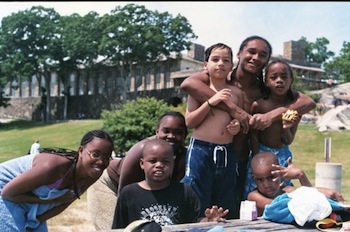 The special needs program is just one of the ways Calumet has expanded to meet the needs of people of all ages and backgrounds. In 1989, the Urban Day Camp program was initiated and remains a coordinated effort between local inner-city congregations and Calumet. Over the years urban day camps have been run in Providence, RI, New Britain, CT, Meriden, CT, New Haven, CT, Hartford, CT, Brockton, MA, and Pittsfield, MA.
The special needs program is just one of the ways Calumet has expanded to meet the needs of people of all ages and backgrounds. In 1989, the Urban Day Camp program was initiated and remains a coordinated effort between local inner-city congregations and Calumet. Over the years urban day camps have been run in Providence, RI, New Britain, CT, Meriden, CT, New Haven, CT, Hartford, CT, Brockton, MA, and Pittsfield, MA.
In order to accommodate the needs of people of all ages and physical challenges, as well as to provide a facility for retreats and the like, the Calumet Conference Center was opened in 1985.
Today Calumet is an organization of the New England Synod of the Evangelical Lutheran Church in America (the result of the merger of three Lutheran bodies) and operates year-round. Calumet is owned by Lutheran Outdoor Ministries of New England, Inc. (LOMNE), a subsidiary corporation of the New England Synod. LOMNE was incorporated as a New Hampshire, not-for-profit, Religious Corporation on January 3, 1997. Each summer over 1,300 children participate in the resident camp, enjoying many of the activities enjoyed by boys at Camp Ossipee along with a solid but open Christian education. In 1997, a day camp was added to the on-site Calumet program and serves over 200 area children, ages 6-12, each summer.
In 2004, the summer program added Vacation Bible Schools to its agenda. Each week one or two VBS programs are run at churches throughout New England. Counselors from Calumet go to the churches and provide curriculum-based programs in partnership with church volunteers.
However, Calumet is no longer only a camp for children, nor is it only a summer camp anymore. People of all ages come to Calumet throughout the year. These programs include LutherHostels, Moms Mother’s Day Weekend, GrandCamp, Spring Fling! for Youth Groups, Sunday School Retreats, Winter Youth Group retreats, Family Vacation Weeks, God Jul Weekend, Van Trips for Senior Adults, Quilting Retreats, Women’s Weekend, and more! Congregations also utilize the facilities and program staff for a variety of congregational retreats.
Once again, Calumet found itself in need of expanding its facilities. In order to keep up with the times and meet the needs of people, a multi-faceted building project took place, made possible by a successful $4million Capital Campaign known as Calumet In Your Lifetime. This is only a continuation of the proud history that Calumet can claim -- even before it became Lutheran!
In May of 2005, Don Johnson, Executive Director, resigned to move on to a new position with Project Connect. Karl Ogren, who was serving as Camp Director for Children and Youth Programs became the Acting Executive Director for one year. In August of 2006, Rev. Dr. Nancy Eldredge Hess, from Minnesota began serving as Executive Director.
In 2009, Calumet celebrates its 50th Anniversary which was named 18,250 Moonlit Nights. Two celebrations took place. One at Calumet at the Giant Church Fair on August 23 and one at Trinity Lutheran Church in Worcester, MA on November 1. Both were testament to the thousands and thousands of lives that have been touch by Calumet’s ministry.
Calumet is now known as Calumet Lutheran Ministries. And so Calumet continues to build and grow, serving more and more people with ever-improving programs in the name of Christ. As we look to the future, there seems to be great promise that each year, each summer, indeed each week, will continue to be "the best Calumet has ever had!"
Epilogue
"The campers have gone their respective paths. Each has taken something of Calumet with them. The hill winds, the stately pines, and the granite of New Hampshire have become part of them. It is safe to assume that some of these boys [sic] will become great adults. Whether they realize it or not, incorporated in their being is the heritage that is Calumet, and in some degree Calumet will inherit the richness of their triumphs." F.E. Whitlock, C.C., 1937
Down beside the moonlit waters of Lake Ossipee
Lies our beautiful Camp Calumet, dear to you and me.
Swell the chorus, speed it onward, 'till the echoes ring.
Let our Camp go down in history, Calumet we sing!
(author anonymous)